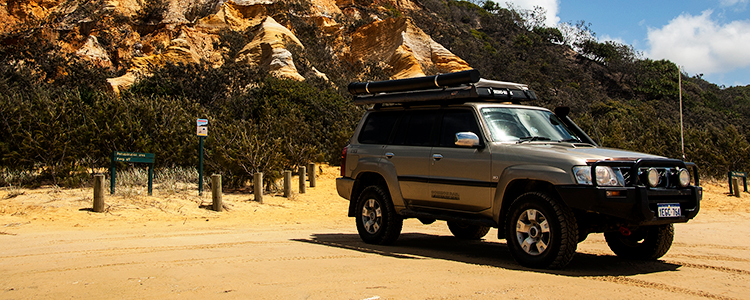No ads found which match your criteria at this time.
Not finding what you want?
Nissan Patrol Buying Guide
The Nissan Patrol is a full-size SUV that has been around since the early ’50s. They were offered in a three or five-door configuration and were sold all over the world on pretty much every continent. North America has been getting Patrol based vehicles since 1969, the most notable being the Nissan Armada. Starting in 2011 the Patrol received a luxurious makeover and was sold under the Infinity badge as the QX80 to North American countries.
Most recent versions such as the Y61 and Y62 have been used by several armed forces around the world. Most notably, the United Nations and the Irish Army. Over its 70-year lifespan, the Patrol has been revised over six generations, each one getting more and more luxurious and powerful.
Nissan Patrol Pros And Cons
Pros
Tough And Reliable
Many four-wheel-drive SUV owners believe the modern generations of 4×4 SUVs are the greatest. But real ones know that those from the late 80s, 90s, and early 2000s are the greatest, and one good example of such as SUV is the Nissan Patrol. They revolutionized off-roading, and some drivers would rather pick an old SUV and build it rather than buy a new one filled with tech and driver aids they consider nonsensical on heavy terrains. For most, newer SUVs are just basic SUVs with mild off-roading capabilities, often nicknamed soft-roaders. Older Nissan Patrols, if kept well, are go-anywhere vehicles designed to withstand anything thrown at it. A time when toughness and durability mattered to car manufacturers.
Compared to the Toyota Land Cruiser, the Nissan Patrol is often sidelined as the unreliable option, which is mostly not the case. Issues are mainly caused by old age, repeated usage, and negligence since some owners believe that JDM cars can run without or with minimal maintenance. When maintained correctly, a Nissan Patrol will last between 200,000 and 3000 miles before major issues occur, which is not bad for a 20 plus year old SUV. The trick with Nissan Patrols is upgrading the cooling system and turbocharger in turbodiesel engines, as these cause the largest number of failures to be covered later in this article.
Highly Tunable Engine Options
One of the reasons to buy a Nissan Patrol over any JDM SUV is its extremely tunable engines, which are unlikely for an SUV, capable of making high figure horsepower and torque outputs. The inline-six Diesel engines are the easiest to build and tune, especially the RD28 and TD42 in their naturally aspirated and turbocharged variants. Most owners and tuners will recommend an aftermarket turbo and a few bolt-on upgrades such as an air intake, aftermarket exhaust, fuel mods, and cooling system upgrades. The only downside to tuning these is that parts are sometimes delayed since the Nissan Patrol isn’t common in the United States.
Nissan Patrol petrol engines aren’t favorable due to excessive fuel consumption, unlike diesel engine tuning, which reduces fuel consumption and emissions. However, the RB30, TB42, TB45, and TB48 are also fairly easy to build and capable of decent numbers. The RB30 is the best of the bunch since it’s basically a Nissan Skyline engine, so finding parts and tuning guide resources is easy. When fully built, an RB30 might reach over 600 horsepower, and you’ll be blasting dunes like Patrols in the Middle East.
Practical and Spacious
With a seating capacity of seven and enough space in the trunk with the third row folded to fit some accessories and tools, the Nissan Patrol is spacious enough for a weekend on the trails. Thanks to aftermarket manufacturers making Patrol-specific and universal accessories such as roof racks and rooftop carrier bags for extra storage, it’s also easy to accessorize. If healthy, the engines offer enough torque through the RPM range, and the Nissan Patrol’s chassis is rigid enough to tow loads of between 4600 and 7500 pounds, depending on the year of manufacture.

Nissan Patrol Y60/GQ interior
Short wheelbase (SWB) Patrols aren’t as practical as the long wheelbase (LWB) variants, as they only seat five and have a lesser trunk capacity. But they are lighter, easier to drive on tight trails and around town, plus you won’t have to struggle to find a parking spot. This makes a two-door Patrol a perfect daily driver if you love hitting some trails immediately after work on a Friday without driving back home if you left fully equipped.
Offers Value For Money
When comparing prices, the Nissan Patrol is often compared to the Toyota Prado and not the Land Cruiser. Yet, it’s a common Land Cruiser alternative for buyers looking for an SUV with equal performance on a smaller budget. This doesn’t only apply to newer and current generations but to older generations as well. For example, importing a clean Nissan Patrol Y60 with some nice mods will cost you $15,000 on average after taxes and other involved costs, while a Land Cruiser would cost almost twice as much. Already imported units retail for less, and you can also find a well-kept older patrol for less than $10,000 since some generations were exported and sold in the US during production time.
Cons
High Maintenance And Running Costs
Buying an old SUV such as the Nissan Patrol has its disadvantages, with high maintenance and running costs topping the list as it takes quite a budget to keep thrashing it off-road. Excessive fuel and oil consumption is just the tip of the iceberg, as these are expected with older cars. Replacing parts, such as suspension components and engine internals, makes you regret buying a Nissan Patrol. But you can’t sell since you’ll buy another, if not a similar Patrol, and you’ll be back it again because you are passionate about older SUVs and off-roading. The best option to avoid recurring costs is to restore the car with aftermarket parts which will leave a dent in your pocket, but you’ll have a “new” old car.
Poor Build Quality
One of the few advantages the Toyota Land Cruiser has had over the Nissan Patrol over the years is its better overall build quality. To begin with, the exterior build quality on older Nissan Patrols shows old age easier with issues ranging from fading paint on the body panels and misaligned panel gaps to malfunctioning headlights and taillights. Surface rust is also expected due to the thin layers of paint that easily get scuffed, so a repaint should be on the to-be-done list if you’re buying a Nissan Patrol.
The interior isn’t any different, and you’re likely to experience issues such as failing door locks and window controls, rapidly wearing out seats, and a fading, blistering, or cracking dashboard. Sometimes, the electrical problems extend to essentials such as the AC compressor, alternator, and starter motor. If these fail in a Nissan Patrol, it’s time to rewire the car before fuses and harnesses start melting, putting the vehicle at risk of burning down.
Nissan Patrol Common Issues
Turbocharger Failure
In Nissan Patrols with turbodiesel engines, turbo failure, mainly caused by over-boosting in engines with the OEM turbochargers, is one of the most likely issues that will lead to engine failure if not addressed. Most owners who have experienced this relate over-boosting to the small turbocharger fitted by Nissan to improve emissions that overspins, mismatching the engine’s RPM. At the same time, others blame it on excessive carbon buildup that seizes the wastegate, preventing excess boost pressure from bleeding out. Both instances result in over-boosting when the turbocharger pushes excess air into the engine.
Over-boosting first affects the turbocharger by damaging the bearings and turbine due to excess friction. It can go undetected since older engines rarely detect when the turbocharger is spinning above its maximum turbine speeds due to faulty boost sensors. One of the earliest signs to pay attention to is reduced engine performance caused by a too-lean air-fuel mixture. Also, you might notice a hissing sound as the boosted air leaks from the boost pipes since they can rupture due to high pressure and temperatures.
Installing a nonrestrictive high-flow exhaust, retuning the ECU, and upgrading the turbocharger eliminate over-boosting. But if you plan on keeping the old turbocharger, upgrade the wastegate or replace the spring on the old one with a high-tension spring. In addition, check for turbine damage and shaft play, which could lead to catastrophic engine failure if they break and end up in the engine. Cleaning the carbon buildup on the turbocharger and the wastegate goes a long way.
Excessive Carbon Buildup
Carbon buildup is one of the biggest problems in older engines. In a Nissan Patrol engine, it mainly occurs on the piston heads, cylinder head, walls, turbocharger, and EGR valve. If there’s carbon buildup on the piston heads and walls, the deposits will get hot and prematurely ignite the air-fuel mixture. This results in premature combustion, leading to a never-ending cycle of carbon buildup accumulation, and can cause rapid gasket wear if it reaches the cylinder head. It also causes rapid wear and tear if it spreads to the cylinder walls and fills piston rings, eating them away and reducing compression.
The last place you’d want carbon deposits forming in a Nissan Patrol turbodiesel engine is the wastegate, turbocharger, or EGR valve. If there’s carbon on the wastegate, it could either clog the wastegate leaving it closed, resulting in the earlier stated over-boosting or leave it open, which leads to boost creep. Carbon deposits can sometimes accumulate on the turbocharger housing and turbine, thus increasing temperatures that may crack. But in most cases, the turbine and bearings go out first.
Vacuum-operated EGR valves like the ones in Nissan Patrols accumulate more carbon than electronically controlled ones in newer models, so occasionally cleaning them is recommended. If there are excessive carbon deposits on the valve, you’ll notice an increase in fuel economy and loss of power, especially when under load. You can also clean the turbocharger and wastegate using an EGR valve cleaner. Adding a carbon cleaning solution while fueling does the trick for the remaining parts where carbon accumulates.
Poor Cooling System
Most Nissan Patrols from the 90s and 80s have cooling issues, and the engine and, in some cases, the automatic transmission overheats due to a poor cooling system. Some owners make it worse by installing an aftermarket steel bumper with no vents, thus restricting airflow to the radiator. Changing the radiator’s placement helps, but it will require using a smaller one, which might not work efficiently. If you’re buying a Nissan Patrol, this is one of the major things you should look out for. Older models are also affected, but cooling systems in these mainly wear out due to old age.
A poor cooling system leads to nothing else except overheating, which according to most owners, kills Nissan Patrol engines like a plague. It causes the cylinder head to warp, crack, and sometimes both if the engine has a bad maintenance history. And as you continue driving, the car oil and coolant leak causing the engine to overheat even more and exhaust gases to escape through the cylinder head. The best way to prevent overheating in a Nissan Patrol is to replace every part of the cooling system, including the coolant lines, water pump, and thermostat, which are frequently ignored.
Premature Suspension Wear
Like most truck owners, Nissan Patrol owners love to swap out the old suspension for a tougher aftermarket one and add some fun bits such as lift kits and adjustable shocks. If you buy one with such upgrades, you’re set to ride through anything mother nature throws at you, but if the car still has the stock suspension, it’s a different case.
Issues start when the front suspension bushings, control arms, wheel bearings, ball joints, and tie rod ends wear out. Thus causing the infamous death wobble felt through the steering wheel when braking and cornering. Also, uneven tire wear and stiff or loose steering could indicate front suspension failure. On the rear suspension, bushings go out quicker than the other components and are harder to detect unless there are squeaks when accelerating or driving. The rear wheel hubs are prone to corrosion leading to squeaking and grinding noises when accelerating and braking.
What To Look For When Buying A Nissan Patrol
Rarely do you find Nissan Patrols for sale in the United States, and if you do, it’s most likely being sold by a JDM car importer or dealership. We have you covered if you’re interested in one and don’t know what to look for when buying a Nissan Patrol. It’s best, to begin with, the interior checking the car’s condition as it will tell you how it has been kept. Minor dents are expected, but massive panel gaps and misaligned panels are always red flags, especially on off-roading SUVs such as the Nissan Patrol.
As mentioned, Nissan Patrols don’t have the best interiors, so that is the next place you should inspect. Check the seat fabrics and feel the plastic trims for crack repairs and repaints. Also, check underneath the floor mats as there might be rust or evidence of rust repairs. Door hinges and frames, mainly the barn-style trunk doors, tend to rust and crack, so don’t leave them out when checking the interior.
The engine bay is the next place and probably the most important to check. Here, inspect for leaks and ask questions about the mods, if any, and it’s always wise to do so with the engine running. While at it, inspect the strut towers, radiator mounts, battery mounts, and behind the bumper for rust.
Check underneath the car before the test drive, primarily on the frame, but not necessarily for rust. The frames on Y61 and older generation Patrols are notorious for bending and cracking if the car is often used on heavy terrain. Chassis reinforcement bars are a good sign, but check the frame using a torch if possible. At the same time, inspect the suspension components, differential and oil pan, checking for leaks. After all that is done, nothing major is left except to feel how the car drives and make the seller an offer if the car meets all your requirements and all paperwork has been verified.
Average Prices
The Patrol was also known as the Nissan Safari in Japan. Due to its great reliability record, the Patrol/Safari holds its value extremely well. Prices start from just under $7,500 and go all the way up to $16,000.
Comparable Alternatives
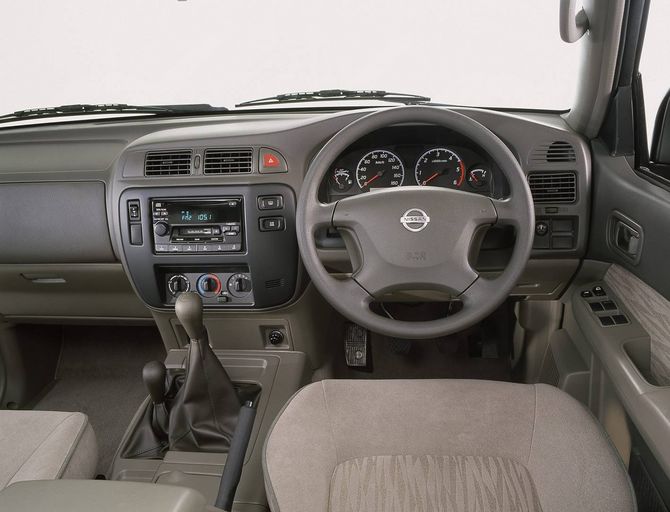
In the world of full-size off-road SUVs, the customer has the upper hand. With so many models to choose from and more being added on a regular basis, the Patrol is one of the best choices. It has been in production for nearly 70 years and has even been used in military applications around the world.
We have compiled a list of some comparable alternatives to the mighty Patrol in order to get an idea for yourself what Nissan’s star SUV is comparing itself with.
- Toyota Land Cruiser (Read our Landcruiser Buyers Guide)
- Mitsubishi Pajero (Read our Pajero Buyers Guide)
- Nissan Safari (Read our Safari Buyers Guide)
- BMW X5
- Isuzu Bighorn
- Jeep Cherokee
Models and Specifications
1951-1960 Nissan Patrol First Generation
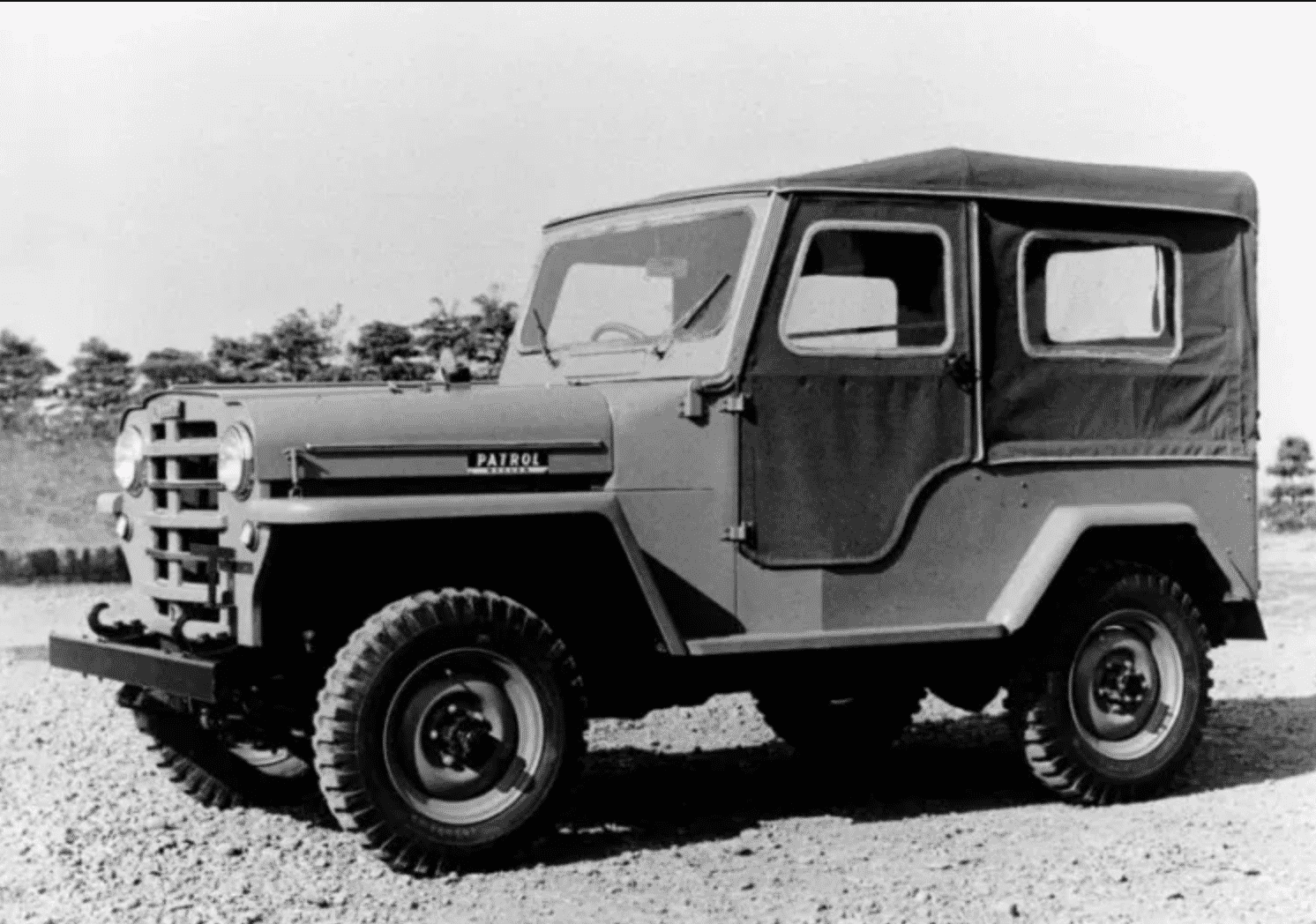
After witnessing the success of Willy’s Jeep, Nissan introduced their version of it in 1951. The first Patrol was initially sold with a 3.7L gas engine, four-speed manual transmission and part-time four-wheel drive.
In 1955 and 1958 new grills were introduced alongside a few other cosmetic changes. By the time this generation was through, Nissan used a total of four engines. This consisted of two 3.7L and two 4.0L engines. All four were offered exclusively in a gasoline configuration.
1959-1980 Nissan Patrol Second Generation
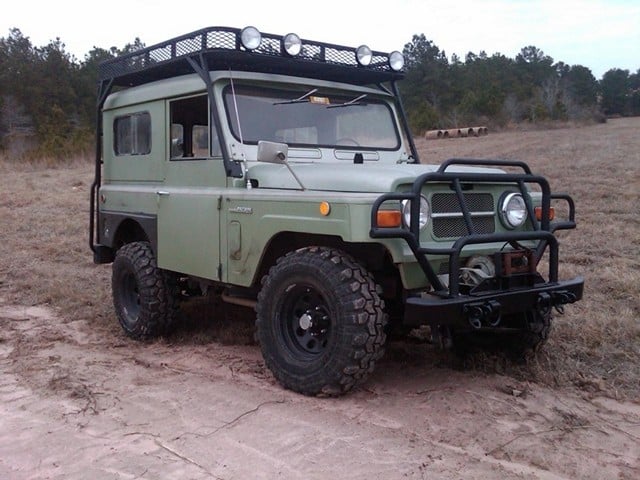
The second-generation Patrol was sold for just over two decades. This time around, the only engine available was a 4.0L inline-six gas engine and a three or four-speed manual transmission. From 1962 to 1969 you could get the famous Patrol in North America under the Datsun brand.
Throughout its 21-year manufacturing history, the second-gen Patrol was available in a small, medium, or long wheelbase, and later in its lifecycle, a genuine hardtop was introduced alongside the classic canvas soft top.
By this time, the long-wheelbase version could fit a total of eight people inside and it was slowly gaining notoriety as a hard-to-kill, go-anywhere vehicle.
1980-1989 Nissan Patrol Third Generation
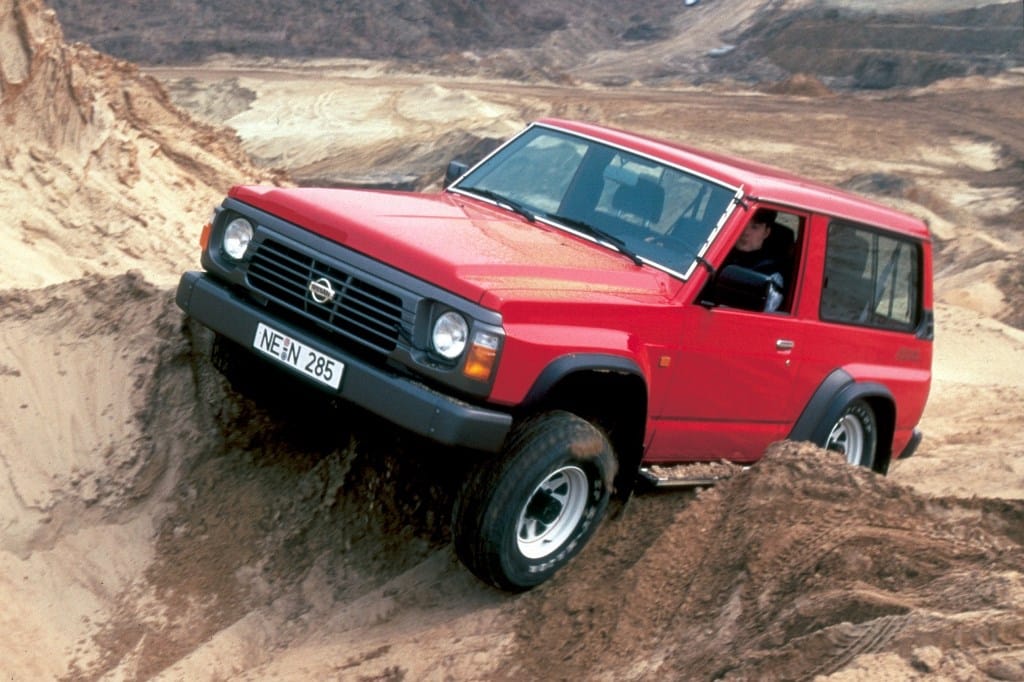
For the first time ever, we see the Patrol offered in a five-door configuration. Additionally, Nissan added a line of diesel engines as well. Each continent that the Patrol was sold in got slightly different variations of the SUV, but no matter where you went in the world, one thing was clear: thanks to its amazing capable 4WD system and great reliability record, everyone loved the Patrol.
The third generation received a total of six engines of which three were gasoline and three were diesel versions. The gasoline engines ranged from 2.4L-4.0L in displacement, while the diesel ones had a 2.7L-3.2L displacement range, with the biggest one being a turbocharged version. To top things off, a four or five-speed manual as well as three-speed auto were available depending on the configuration the customer chose and where it was sold.
1986-2002 Nissan Patrol Fourth Generation
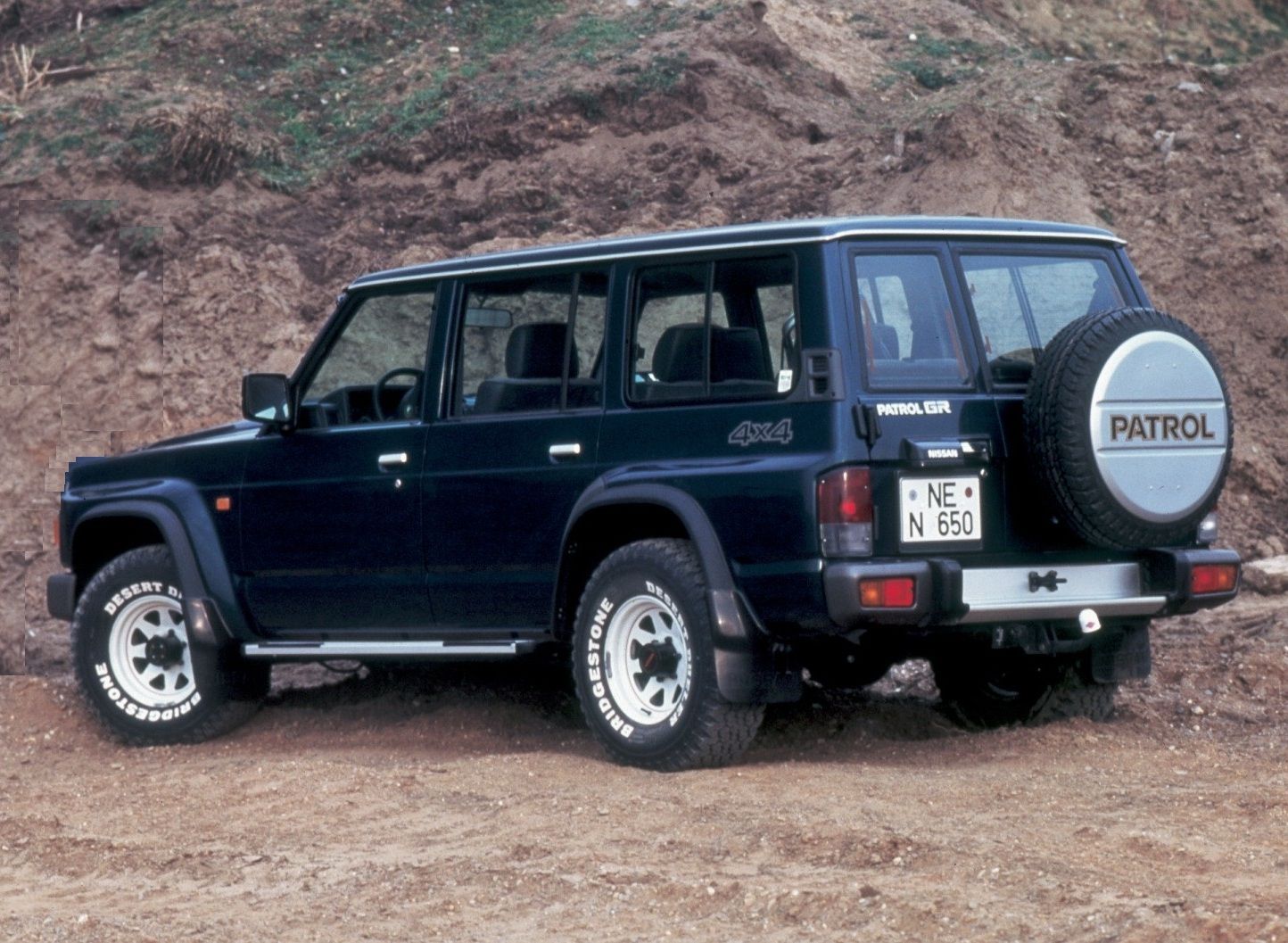
This generation is probably the most recognized and sought-after Patrol. In addition, the fourth generation brought with it a slew of upgrades that made it far superior when compared to past models. For example, coil-sprung suspension and sway bars were available to increase comfort and driveability.
On the drivetrain side, Nissan offered four motors of which two were diesel and two gasoline-powered. Two five-speed manual transmissions and a four-speed automatic were also available depending on the trim level.
To make them even more appealing, dealers started offering goodies such as sunroofs, roof racks, tow bars, etc. so that the customer could have a unique vehicle before ever leaving the dealer lot.
1997-Present Nissan Patrol Fifth Generation
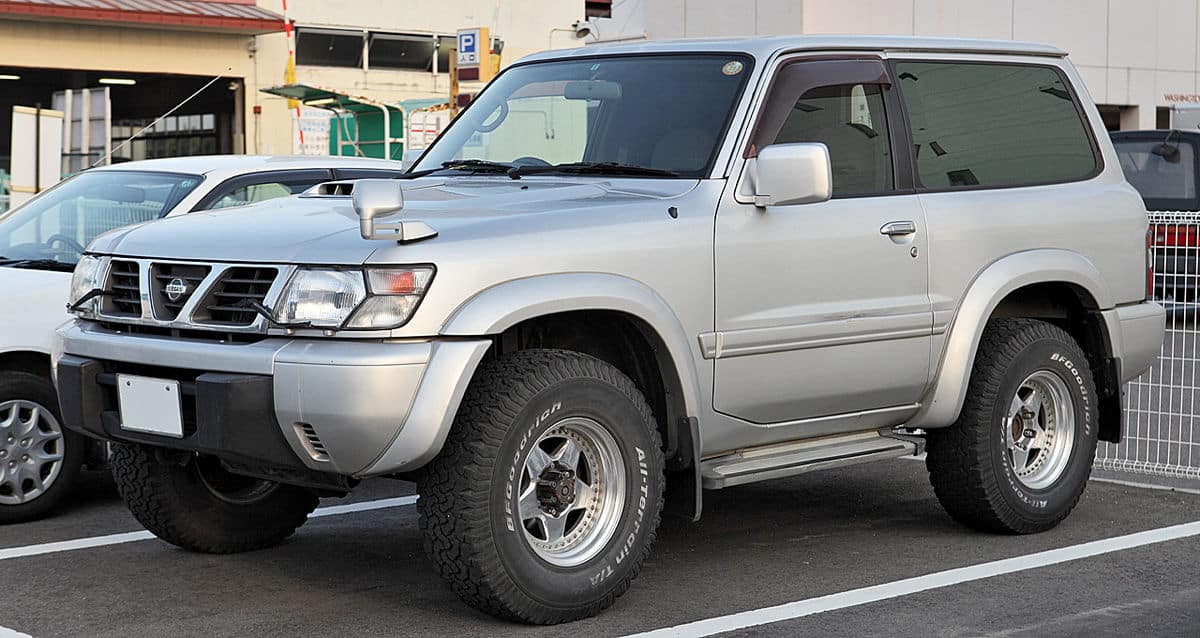
Appearing in late ’97, the new design brought with it some new engines and body styles. The newly redesigned patrol was offered in a three and five-door SUV alongside a two and four-door truck. In addition to minor transmission and drivetrain changes, the customer now had six engines to choose from. These included a 4.5L and 4.8L gas engine and four types of diesel starting from a 2.8L and going all the way up to a 4.2L turbocharged version.
Around the early 2000s is when the tuning community started realizing that these trucks were able to make huge power, with some having as much 2000 horsepower from the TB48DE motor.
In 2014, the fifth-gen Patrol was discontinued except for South Africa, the Middle East, Pakistan, Paraguay, Philippines, Bolivia, Sri Lanka, and some African countries. These were left in production for these countries as an alternative for the Toyota Land Cruiser.
2010-Present Nissan Patrol Sixth Generation
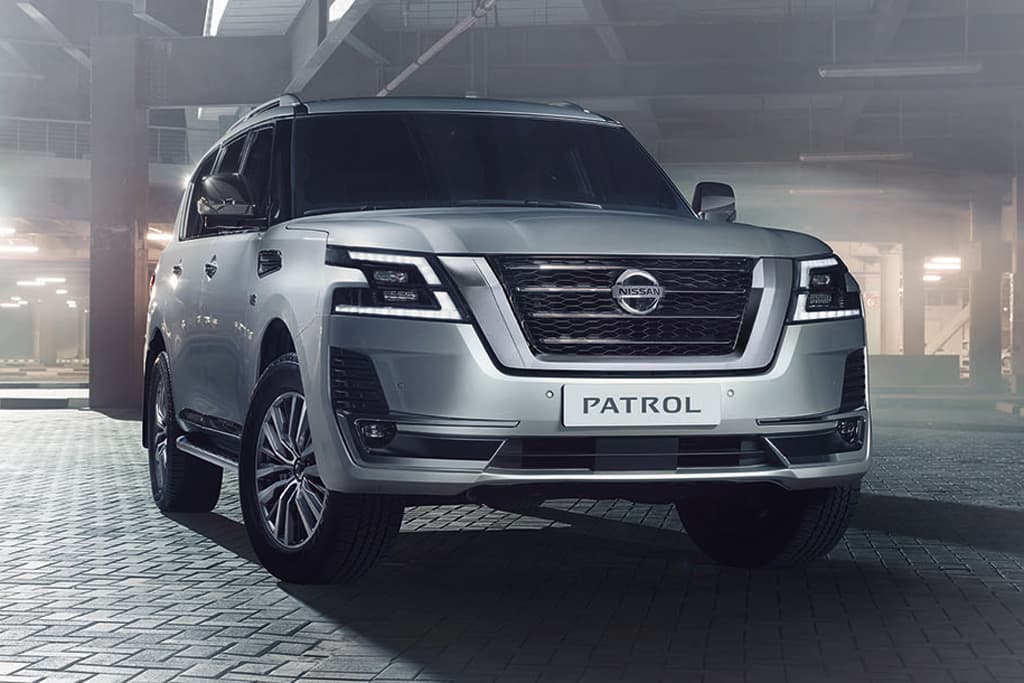
Unveiled in early 2010, the new Patrol was significantly improved, both cosmetically and mechanically. For this generation, Nissan cut the diesel engines out and now only offered three gasoline engines that included a 4.0L V8 and two 5.6L V8s.
In North America, the Patrol was known as the Armada and its luxury brother from Infinity was known as QX80. Furthermore, the Nismo version increased the power by almost 30 horses. In the last 10 years, the world-famous patrol underwent two facelifts, with the last one being in 2019.
FAQ
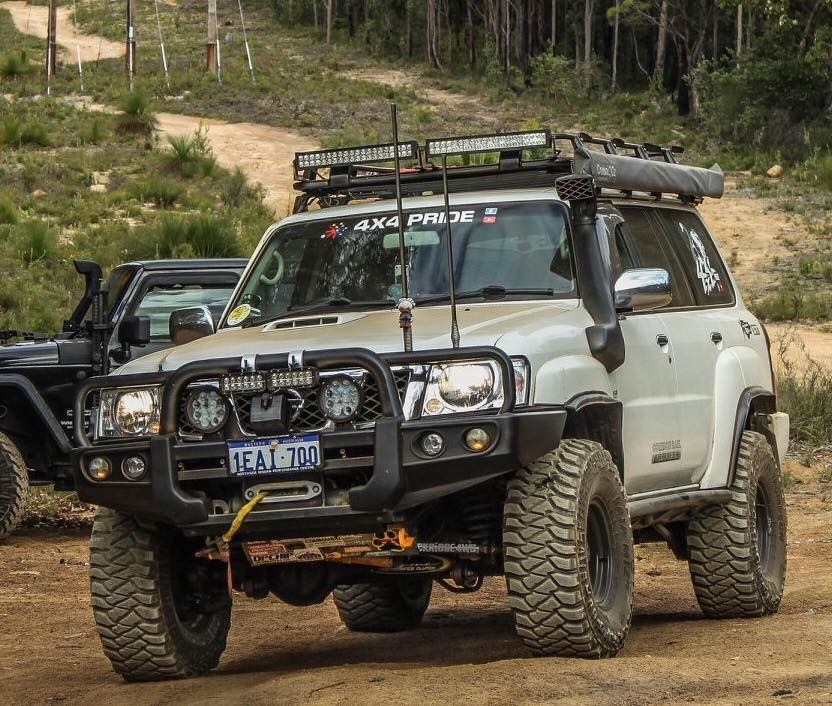
The Nissan Patrol’s width is between 1689mm and 1995mm. The 260 Patrol made from 1986 to 1993 has the shortest width at 1689mm, while the Y62 Patrol made from 2010 to date is the widest at 1995mm.
There’s no difference in size with a standard patrol. A Nissan Patrol Safari edition has similar dimensions to a Nissan Patrol produced in the same year.
With manageable issues, prices start at approximately $5,000 for a running Nissan Patrol pickup. Older models might be highly-priced, mainly because they are rare and restoring one isn’t that easy. However, keep in mind that prices can go to over $30,000 depending on the year of manufacture, spec and any upgrades done
Not at all. The Patrol has been sold in North America since 1968 in one way or another, meaning that there are plenty of parts; stock, or aftermarket available.
The Nissan Patrol is a full-size SUV with 3-row seating enabling it to carry 7 people. Most SUVs with third-row seating seat 2 people in the third row, but the Patrol sits 3 comfortably due to the ample space between seats due to its longer wheelbase.
Early production models of the Nissan patrol have a 1720mm to 1980mm height, while the Y62 Patrol produced from 2010 to date is 1940mm tall.
A Nissan Patrol will set you back around $4,000 for one that is running but in need of some essential repairs. Later production models retail at around $7,000. However, it’s still worth it as the Nissan Patrol is one of the Most capable SUVs regardless of age.
2003 (Y61-1997-2016). Early production models of the Y61 Patrol are known to have the worst engine problems, including crankshaft failure, oil leakages, fuel pump failure and often blown gaskets.
Finding a Y62 Patrol in the US might be difficult, and most are overpriced. But for other generations, you can find some for sale online listed on car sale websites and even Facebook marketplace.
Sources
- https://en.wikipedia.org/wiki/Nissan_Patrol
- https://www.zigwheels.ae/new-cars/nissan/patrol/faq/what-are-the-pros-and-cons-of-nissan-patrol
- https://www.patrol4x4.com/threads/gq-vs-gu-pros-and-cons.405235/
- https://www.patrol4x4.com/threads/diesel-gas-pros-and-cons.63882/
- https://www.cargurus.com/Cars/2007-Nissan-Patrol-Reviews-c11660
- https://www.breakeryard.com/car-parts/nissan/patrol-gr/common-problems
- https://www.zigwheels.com.au/new-cars/nissan/patrol/faq
How to Import a Nissan Patrol
Read our ultimate guide, How to Import a Car from Japan.
Can you make this guide better? Are you a huge fan of the Patrol? If so, please contact us.
